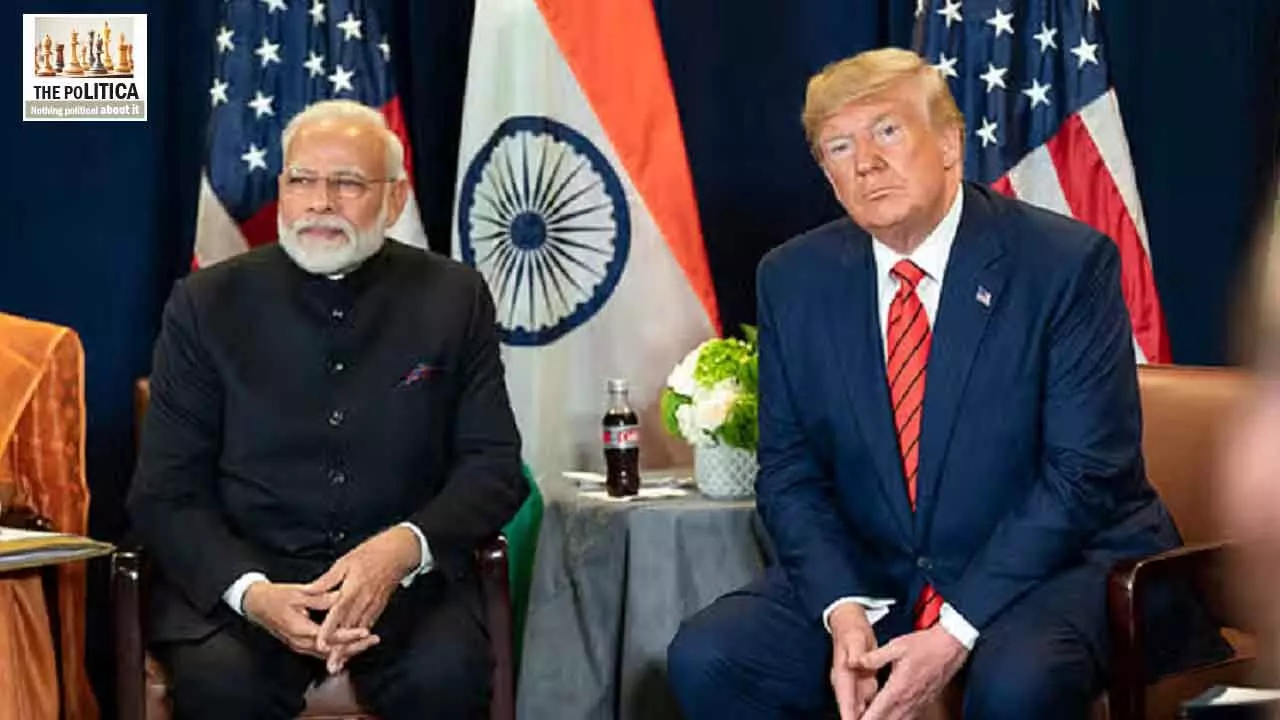From QUAD To Trade: India’s Balancing Act Under Trump 2.0
It is ironic that the world's two biggest democracies, Bharat and the US have often found themselves at odds on various geopolitical and economic issues
From QUAD To Trade: India’s Balancing Act Under Trump 2.0

Both Trump and Modi are nationalist leaders with bold visions—Trump seeks to cement America's dominance, while Modi aims to restore Bharat's ancient glory. Yet, their paths often collide on trade, geopolitics, and strategic alliances. Will their shared nationalism forge stronger ties or deepen the divide between these global powers?
The next four years till 2029 could be the defining chapter in Indo-US relations in many ways. Both Indian Prime Minister Narendra Damodardas Modi and President Donald J. Trump are nationalist leaders who have prioritised their respective countries' interests above all else. While Trump believes a "golden era" has started under his second term that will outshine the 200+ years of American history, PM Modi's vision for Bharat is rooted in a revival of its civilisational heritage, dating back to the Vedic era.
It is ironic that the world's two biggest democracies, Bharat and the US have often found themselves at odds on various geopolitical and economic issues. They have had more differences than commonalities and have been at cross purposes, often viewing them from completely different perspectives.
Yet, they have sustained a pragmatic relationship—one that balances national interests while fostering strategic cooperation —perhaps a great example of how democracy should work.
Symbolic Gestures and Strategic Calculations
The seating of Indian Foreign Affairs Minister S Jaishankar in the front row during Trump’s inauguration was seen by many geopolitical analysts as a calculated move—signalling the recognition of India’s growing importance in an increasingly uncertain global order. However, beyond such symbolic gestures, deep strategic differences persist. But that is where the bonhomie probably ends between the two countries.
Trump’s America-First Policy and India’s Dilemma
Trump’s foreign policy has always been transactional. His past actions—ranging from pressuring NATO allies to pay more for defence to renegotiating trade deals—demonstrate his unrelenting focus on securing financial and strategic gains for the US. In his second term, Trump has made it clear that the world should treat US business and strategic interests fairly.
To achieve that, if he has to rename the Gulf of Mexico, take back the Panama Canal, make the EU pay for its security, acquire Greenland, impose an emergency along the southern border, or implement a 25 per cent tariff—so be it. For Bharat, this presents both opportunities and challenges. While Modi’s government may find common ground with Trump on countering China through the QUAD alliance, other issues—such as trade barriers, tariffs on Indian exports, and the US stance on India’s energy ties with Russia—could become friction points.
Key Challenges for Bharat
• Ensuring the US grant India greater strategic autonomy to deal with Pakistan and Bangladesh, considering the shifting geopolitical landscape in South Asia.
• Negotiate better trade terms without succumbing to Trump’s aggressive economic policies.
• Navigate India’s historical ties with Russia, given Trump's adversarial stance on Moscow.
Trump’s First Visit: Will Bharat be his Priority?
Trump’s choice of Saudi Arabia as the destination for his first official visit in 2017 was a break from tradition, driven by a $450 billion defense deal. After the inauguration of his second term, during a marathon media session at the Oval Office, when asked about his first visit; he stated that if Saudi Arabia were to again sign a $500 billion deal, adjusted for inflation, he would go. This underscored his transactional approach to foreign relations and the fact that economic and strategic benefits dictate his travel decisions.
With the UK and EU’s declining influence, the Middle East's limited offerings beyond oil, and with “Drill, Baby, Drill” being the new mantra of Trump’s administration, the US is less dependent on foreign oil. China remains America’s primary geopolitical adversary.
Bharat—an emerging global power that has taken on the mantle of championing the Global South. New Delhi's soft power has repeatedly demonstrated that it does not believe in coercion or competition for geopolitical supremacy. Modi’s philosophy of Vasudhaiva Kutumbakam—"The world is one family"—has gained global acceptance. Thus, Bharat stands as an attractive strategic partner. If Modi can offer favourable investment policies in critical sectors like healthcare, finance, and defence technology, Trump may prioritise a visit to Bharat early in his second term- which would make a strong global statement.
QUAD: A Stronger Military Alliance?
Trump has never been enthusiastic about BRICS, and his administration may push to transform QUAD into a formalised military alliance—one that sees India playing a more active role in countering China's influence in the Indo-Pacific.
While Modi and Trump share nationalist ideologies, their engagement will be shaped by strategic give-and-take. Bharat will assert its interests while accommodating Trump's America-First stance, ensuring that the Indo-US partnership remains mutually beneficial in an increasingly complex global order.
(The author is Founder of My Startup TV)

